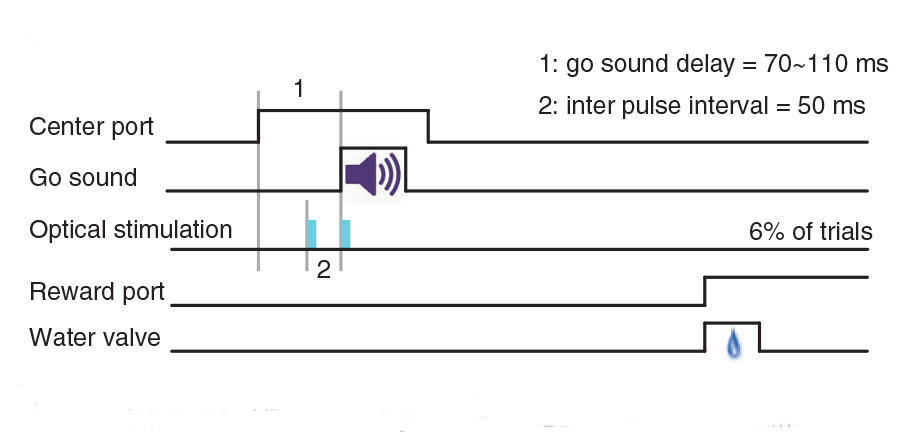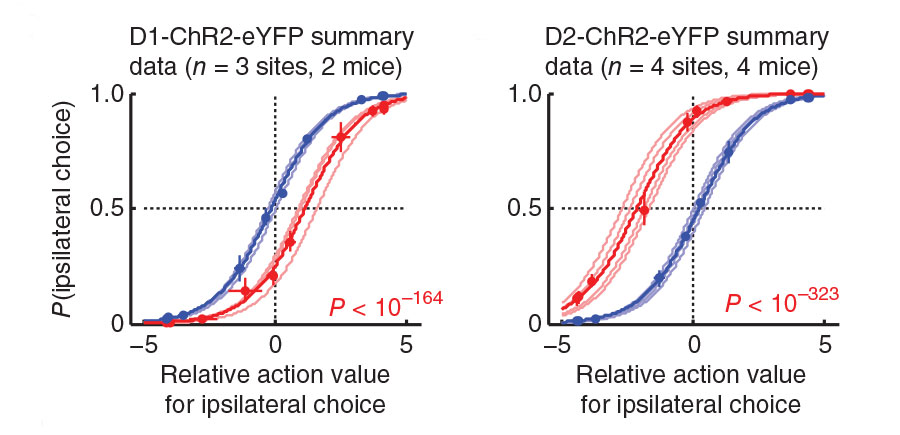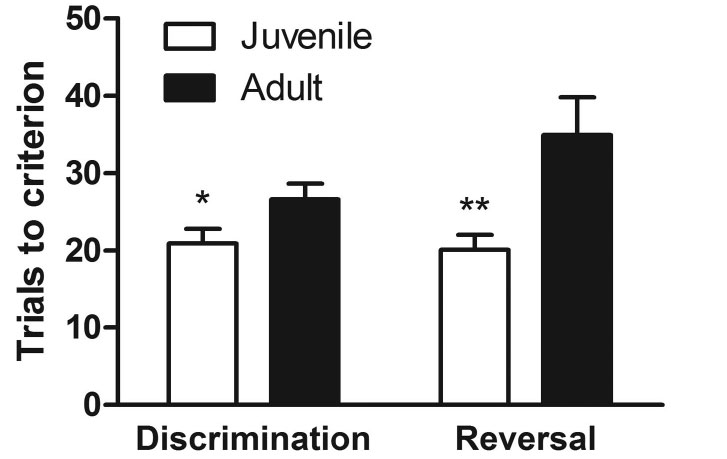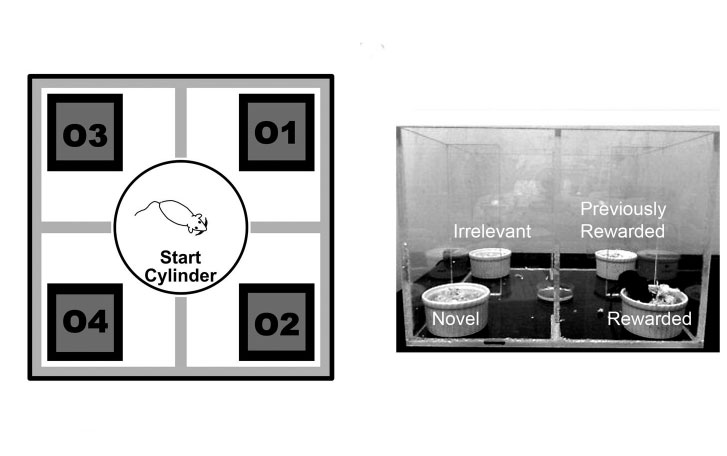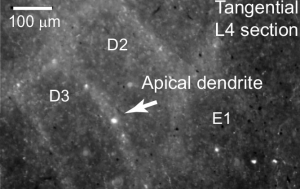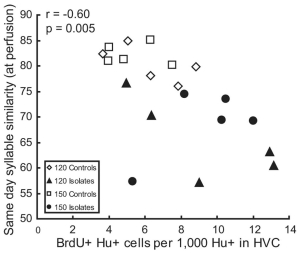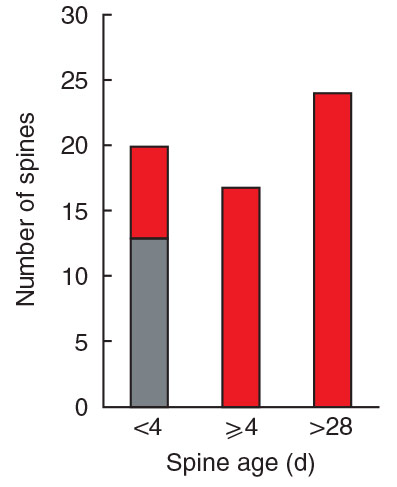
Pubmed: Wilbrecht L
Identification of a Brainstem Circuit Regulating Visual Cortical State in Parallel with Locomotion
Sensory processing is dependent upon behavioral state. In mice, locomotion is accompanied by changes in cortical state and enhanced visual re- sponses. Although recent studies have begun to elucidate intrinsic cortical mechanisms underlying this effect, the neural circuits that initially couple locomotion to cortical processing are unknown. The mesencephalic locomotor region (MLR) has been shown to be capable of initiating running and is associated with the ascending reticular activating system. Here, we find that optogenetic stimulation of the MLR in awake, head-fixed mice can induce both locomotion and increases […]
Cocaine-induced structural plasticity in frontal cortex correlates with conditioned place preference
Contextual cues associated with previous drug exposure can trigger drug craving and seeking, and form a substantial obstacle in substance use recovery. Using in vivo imaging in mice, we found that cocaine administration induced a rapid increase in the formation and accumulation of new dendritic spines, and that measures of new persistent spine gain correlated with cocaine conditioned place preference. Our data suggest that new persistent spine formation in the frontal cortex may be involved in stimulant-related learning driving appetitive behavior.
Francisco Javier Muñoz-Cuevas, Jegath Athilingam, Denise Piscopo, Linda Wilbrecht, Cocaine-induced structural plasticity in frontal cortex correlates with conditioned place preference, […]
Transient stimulation of distinct subpopulations of striatal neurons mimics changes in action value
In changing environments, animals must adaptively select actions to achieve their goals. In tasks involving goal-directed action selection, striatal neural activity has been shown to represent the value of competing actions. Striatal representations of action value could potentially bias responses toward actions of higher value. However, no study to date has demonstrated the direct effect of distinct striatal pathways in goal-directed action selection. We found that transient optogenetic stimulation of dorsal striatal dopamine D1 and D2 receptor–expressing neurons during decision-making in mice introduced opposing biases in the distribution of choices. The effect of stimulation on choice was dependent on recent reward […]
Juvenile mice show greater flexibility in multiple choice reversal learning than adults
We hypothesized that decision-making strategies in juvenile animals, rather than being immature, are optimized to navigate the uncertainty and instability likely to be encountered in the environment at the time of the animal’s transition to independence. We tested juvenile and young adult mice on discrimination and reversal of a 4-choice and 2-choice odor-based foraging task. Juvenile mice (P26–27) learned a 4-choice discrimination and reversal faster than adults (P60–70), making fewer perseverative and distraction errors. Juvenile mice had shorter choice latencies and more focused search strategies. In both ages, performance of the task was significantly impaired by a lesion of the dorsomedial […]
Structural Plasticity Underlies Experience-Dependent Functional Plasticity of Cortical Circuits
The stabilization of new spines in the barrel cortex is enhanced after whisker trimming, but its relationship to experience-dependent plasticity is unclear. Here we show that in wild-type mice, whisker potentiation and spine stabilization are most pronounced for layer 5 neurons at the border between spared and deprived barrel columns. In homozygote αCaMKII-T286A mice, which lack experience-dependent potentiation of responses to spared whiskers, there is no increase in new spine stabilization at the border between barrel columns after whisker trimming. Our data provide a causal link between new spine synapses and plasticity of adult cortical circuits and suggest that αCaMKII autophosphorylation […]
Neural circuits can bridge systems and cognitive neuroscience
There has been an emerging focus in neuroscience research on circuit-level interaction between multiple brain regions and behavior. This broad circuit-level approach creates a unique opportunity for convergence and collaboration between studies of humans and animal models of cognition.
Wilbrecht L, Shohamy D. 2010. Neural circuits can bridge systems and cognitive neuroscience. Front Hum Neurosci. 3:81 doi: 10.3389/neuro.09.081.2009 (Full Text)
Long-term, high-resolution imaging in the mouse neocortex through a chronic cranial window
To understand the cellular and circuit mechanisms of experience-dependent plasticity, neurons and their synapses need to be studied in the intact brain over extended periods of time. Two-photon excitation laser scanning microscopy (2PLSM), together with expression of fluorescent proteins, enables high-resolution imaging of neuronal structure in vivo. In this protocol we describe a chronic cranial window to obtain optical access to the mouse cerebral cortex for long-term imaging. A small bone flap is replaced with a coverglass, which is permanently sealed in place with dental acrylic, providing a clear imaging window with a large field of view (~0.8–12 mm2). The surgical […]
Linking Affect to Action: Critical Contributions of the Orbitofrontal Cortex
The orbitofrontal cortex (OFC) is a brain region that is privy to a wealth of information from sensory, emotional, and memory-related brain regions and thus likely serves as an important center for integration and evaluation. Recent research is revealing that the OFC could be a major site, or is at the very least an essential participant in a network of sites, where sensory and memory-related information is evaluated and transformed into predictions of the future used to guide decisions and actions.
On March 11–14, 2007, the New York Academy of Sciences hosted a conference dedicated to integrating recent research on the orbitofrontal […]
High levels of new neuron addition persist when the sensitive period for song learning is experimentally prolonged
Socially reared zebra finch males imitate a song they hear during posthatching days 30–65; during this time, many new neurons are added to the high vocal center (HVC), a forebrain nucleus necessary for the production of learned song. New neuron addition drops sharply after day 65, and no new songs are imitated. In contrast, male zebra finches reared in isolation from other males have more variable songs at day 65 and thereafter can still imitate new sounds (Eales, 1985). We show that, in isolate birds, a greater number of new neurons continues to be added to HVC during the next 85 […]
Spine growth precedes synapse formation in the adult neocortex in vivo
Dendritic spines appear and disappear in an experience-dependent manner. Although some new spines have been shown to contain synapses, little is known about the relationship between spine addition and synapse formation, the relative time course of these events, or whether they are coupled to de novo growth of axonal boutons. We imaged dendrites in barrel cortex of adult mice over 1 month, tracking gains and losses of spines. Using serial section electron microscopy, we analyzed the ultrastructure of spines and associated boutons. Spines reconstructed shortly after they appeared often lacked synapses, whereas spines that persisted for 4 d or more always […]


